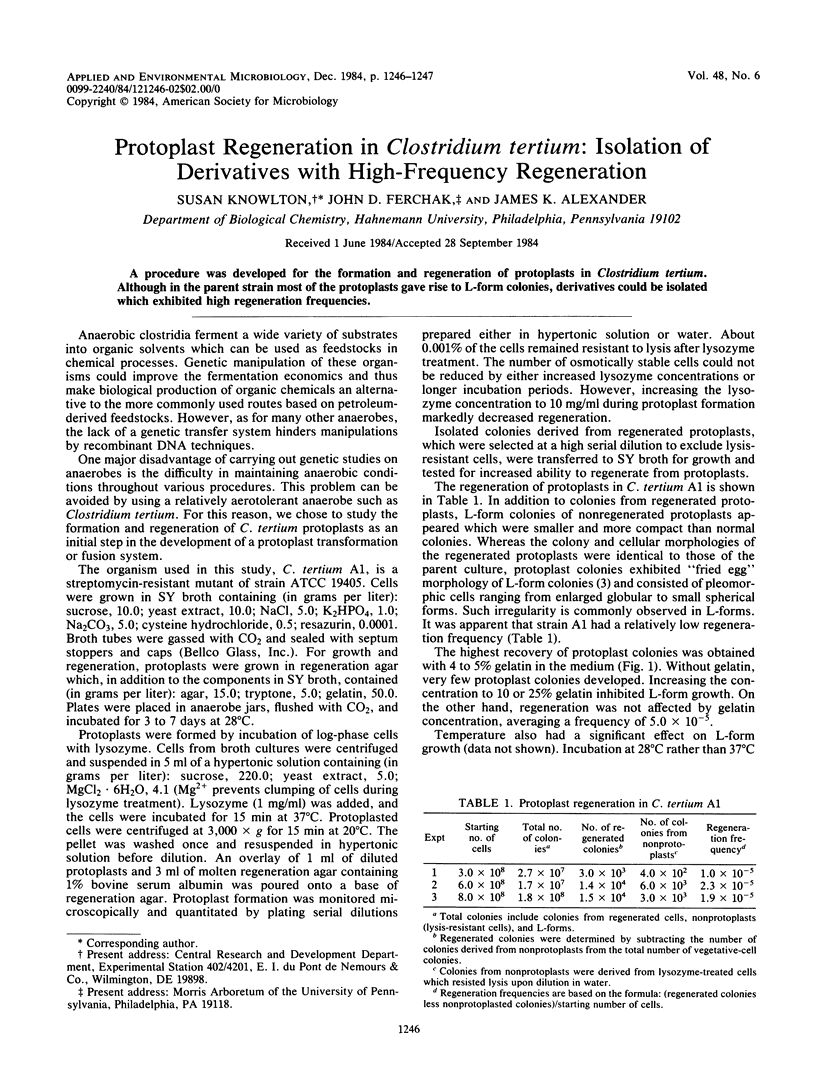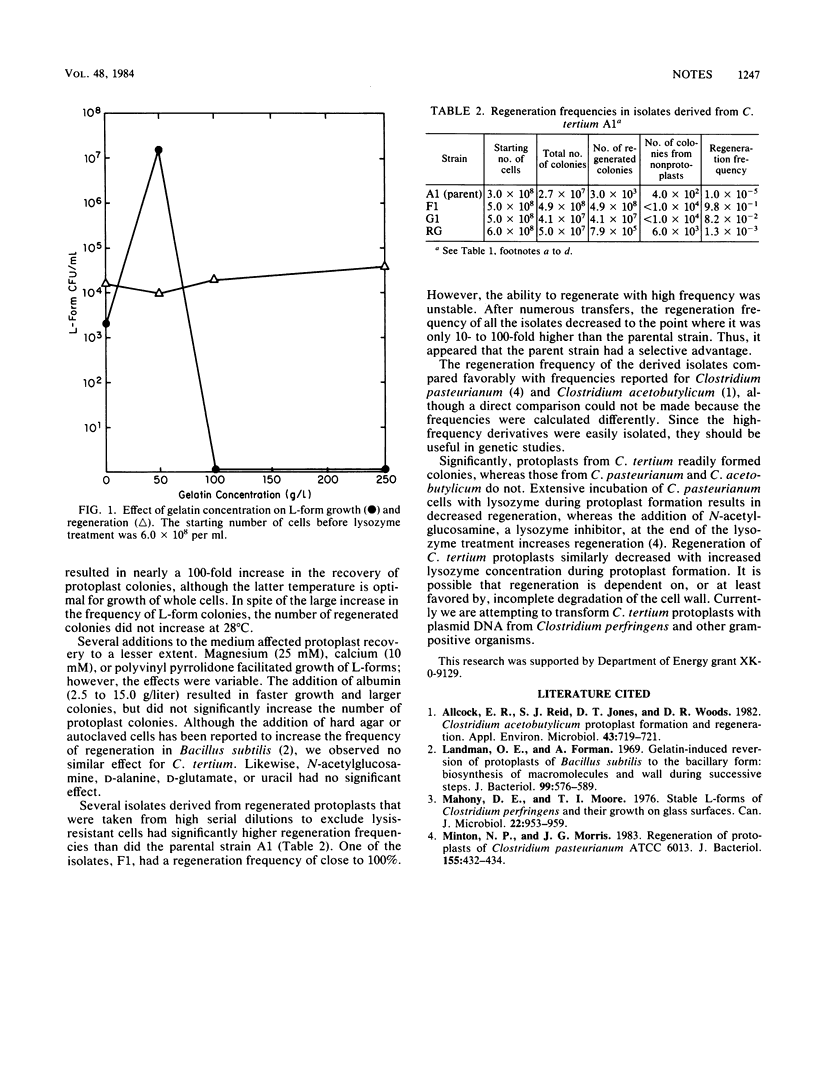Abstract
A procedure was developed for the formation and regeneration of protoplasts in Clostridium tertium. Although in the parent strain most of the protoplasts gave rise to L-form colonies, derivatives could be isolated which exhibited high regeneration frequencies.
Full text
PDF

Selected References
These references are in PubMed. This may not be the complete list of references from this article.
- Allcock E. R., Reid S. J., Jones D. T., Woods D. R. Clostridium acetobutylicum Protoplast Formation and Regeneration. Appl Environ Microbiol. 1982 Mar;43(3):719–721. doi: 10.1128/aem.43.3.719-721.1982. [DOI] [PMC free article] [PubMed] [Google Scholar]
- Landman O. E., Forman A. Gelatin-induced reversion of protoplasts of Bacillus subtilis to the bacillary form: biosynthesis of macromolecules and wall during successive steps. J Bacteriol. 1969 Aug;99(2):576–589. doi: 10.1128/jb.99.2.576-589.1969. [DOI] [PMC free article] [PubMed] [Google Scholar]
- Mahony D. E., Moore T. I. Stable L-forms of Clostridium perfringens and their growth on glass surfaces. Can J Microbiol. 1976 Jul;22(7):953–959. doi: 10.1139/m76-138. [DOI] [PubMed] [Google Scholar]
- Minton N. P., Morris J. G. Regeneration of protoplasts of Clostridium pasteurianum ATCC 6013. J Bacteriol. 1983 Jul;155(1):432–434. doi: 10.1128/jb.155.1.432-434.1983. [DOI] [PMC free article] [PubMed] [Google Scholar]


